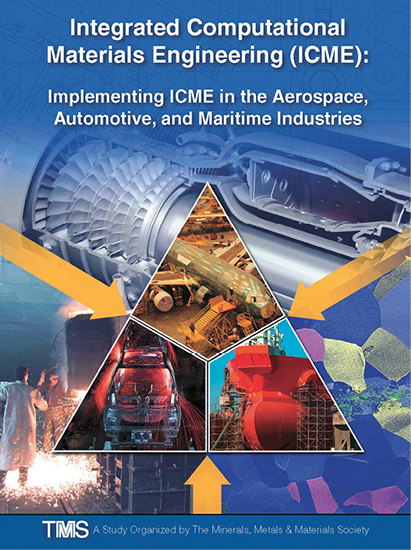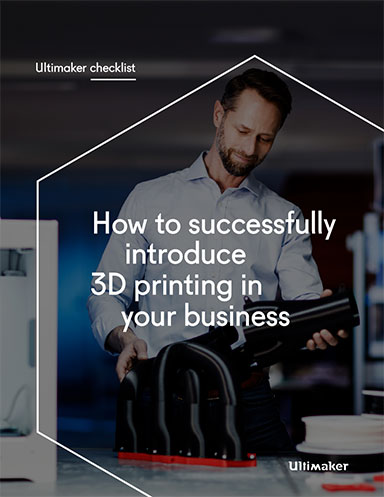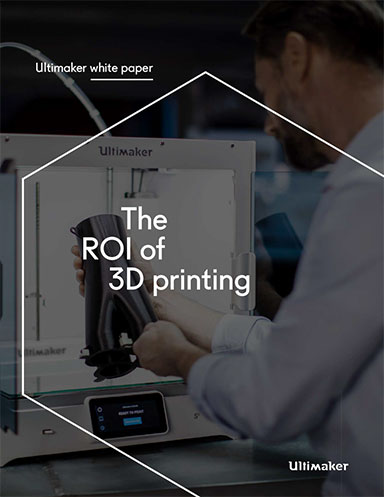
Materials intelligence from Granta is integrated with many CAD and simulation programs, including Siemens NX, shown here. Image courtesy of Granta Design.
Latest News
January 1, 2019
Material information is one of the critical building blocks in simulation-led design. Many users don’t have to think too much about it because, for most software users, the properties of the material—how it stretches, how it bends in response to stress, how much heat it can resist, and so on—are already coded into the software, often as part of a materials library.
However, a peek behind the scenes shows some industry groups and firms quietly toiling away to bring materials science to a whole new level, with tangible benefits to the simulation software and additive manufacturing (AM) sectors.
The Ultimate Equation for Additive Manufacturing
In August 2018, the National Institute of Standards and Technology (NIST) awarded a grant to additive manufacturing database and analytics software developer Senvol, for a project dubbed “Continuous Learning for AM Processes Through Advanced Data Analytics.” The project is expected to yield insights on how different AM parameters—such as laser power, melt pool temperature, material density and part tensile strength—affect one another.
“Machine parameters plus raw materials properties equals part properties,” says Annie Wang, president of Senvol. “So if you change the machine settings (such as laser power) or material properties (such as chemical composition, particle distribution, density or flow rate), then you end up changing the properties of your printed part in some big or small ways.”

The cover page of the ICME implementation report, published by the Minerals, Metals & Materials Society. Image courtesy of TMS.
The study is well underway, with Senvol applying machine learning to identify and map out the complex relationships among these input and output values. When completed, the insights from the project will be distilled as an algorithm-driven AM analytics and customization software, deployable by enterprises that produce large-scale AM production runs involving multiple machines.
“If you happen to have multiple production sites using AM, we envision that you would be able to load all the data collected from these sites into our software,” explains Wang. “This means each site also learns from the data that comes from other sites.”
Armed with a deeper understanding of materials, AM system makers might tune the machine settings to achieve the desired stiffness or durability for a client. Similarly, materials providers might invent a specific type of material with a client’s desired parameters. And manufacturers using AM for high-volume production can use custom materials with specific machine settings to achieve the desired part characteristics (stiffness, flexibility, fatigue life or tensile strength).
Some of the relationships may be intuitive to experienced AM users. For example, simple logic dictates that denser materials lead to stronger parts. “But keep in mind, this kind of simple rule of thumb is usually not enough,” Wang points out. “Usually, your requirement is that you need parts with above X or Y value in tensile strength. To get that, you need quantifiable inputs. You can’t just say more laser power, or faster scan speed.”
For more on this project, read “Senvol and NIST: New Project to Establish AM Process-Structure-Property Relationships,” by Pam Waterman.
The Integrated Approach
In 2013, the Minerals, Metals & Materials Society (TMS), an industry group, published a reported titled “ICME: Implementing ICME in the Aerospace, Automotive, and Maritime Industries.” (ICME stands for Integrated Computational Materials Engineering). The study was made possible with a grant from the U.S. Department of Defense, U.S. Department of Energy and U.S. National Science Foundation.
“Incorporating computational methods (along with critical experiments for model verification and validation) as an integrated component of the product development cycle is a relatively new practice within the maritime industry,” the study’s authors wrote in their closing remarks. “Yet it shows great promise for reducing the time and cost investments required for the development of new materials, components, and/or manufacturing processes.”
Dr. Georg J. Schmitz and Ulrich Prahl, co-editors of the “Handbook of Software Solutions for ICME,” initially set out to compile a kind of “Yellow Pages of software solutions for ICME.” Upon reflection, they concluded such a document, “even if being very comprehensive—would be quite boring to read (and also to write) and probably would even be outdated after a short time,” recalls Schmitz.
The book was refashioned to be “particularly suited for young scientists and engineers seeking an overview of modern simulation tools in the area of computational materials science and ICME,” he explains.
Successful implementation of the ICME approach means “components can become even less heavy by tailoring the local materials properties at different locations in the component,” says Schmitz. “The process determines the microstructure, so in AM, it also allows for new microstructure designs.”
“With the emergence of technologies such as additive manufacturing, there is a blurring of the boundary between what constitutes the development of ‘a material’ and the development of ‘a part,’ so it is likely that engineering simulation methods will to some extent merge with ICME approaches over time,” reasons James R. J. Goddin, market development manager, Granta Design.
ICME might be unfamiliar to many simulation software users, but it has a link to finite element analysis (FEA). “ICME already integrates current structural analysis, fluid dynamics and thermal analysis workflows as boundary conditions for a spatially resolved description of the microstructure and its evolution during processing a service. The microstructure in turn provides the basis to extract the properties, ultimately entering back locally into the FEA,” says Schmitz.
Realistically Materialistic
Materials information technology company Granta Design counts many of the CAD and simulation software heavyweights as its partners. On the list are Autodesk, Dassault Systèmes, Siemens PLM Software and PTC, the prominent four in the design software business; there are also Altair and ANSYS, two leading names in simulation. Explaining its involvement in ICME, Granta writes: “We help engineers to combine and manage data from experiment and simulation at different time and length scales. The aims are to gain insight and design better materials, faster, while reducing reliance on expensive experimentation.”
“ICME is an approach to better understand and develop the performance of materials and processes,” says Goddin. “This includes developing models to describe this performance and confirming that these models reflect reality by calibrating and validating them against experimental results where available.”
The Need for a Lingua Franca
A major hurdle in ICME advancement is the lack of a common language and the cost of software, Schmitz says.
“Interoperability between various heterogeneous software tools requires a common language (an ontology),” he notes. “Another hurdle may be the number of different tools needed to do meaningful ICME, and the related costs for their procurement and maintenance. New business models like software as a service seem to emerge here.”
In Europe, the European Materials Modelling Council (EMMC) has conducted two International Workshops on Software Solutions in ICME. Similar efforts are also taking place under the ITEA VMAP (Virtual Material Modeling) project, with participation from the simulation user group NAFEMS.
The organization’s role will be “to lead all dissemination activities during the project including a survey of industrial requirements, the organization of an international conference and the creation a vendor-neutral Material Data Exchange Interface Standard community which will carry on the standardization efforts into the future,” writes NAFEMS.
Subscribe to our FREE magazine, FREE email newsletters or both!
Latest News
About the Author
Kenneth Wong is Digital Engineering’s resident blogger and senior editor. Email him at [email protected] or share your thoughts on this article at digitaleng.news/facebook.
Follow DE





